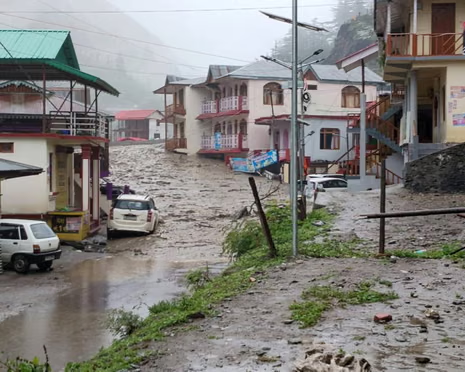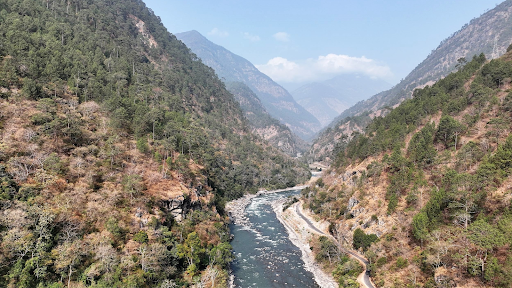Description

Disclaimer: Copyright infringement not intended.
Context
- Unusually high number of western disturbances (WDs) that India has experienced in the last three months.
Details
High Frequency of Western Disturbances
- India has witnessed an unusually high number of western disturbances (WDs) in the last three months.
- May had six WDs, which is surprisingly high for the summer months.
- April and March also saw three and seven WDs, respectively.
Impact on Weather Patterns
- WDs kept long-lasting heat waves at bay for some parts of India during the three months.
- However, they also caused heavy rainfall and hailstorms in many regions, leading to crop damage.
Changing Characteristics and Possible Climate Change
- WDs are typically sparse and weaker in warmer months, with peak activity during winter.
- The trend of increasing WD activity in summer may be a result of human-induced climate change.
- This could indicate changing weather patterns and characteristics during these seasons.
Implications for Monsoon Weather Systems
- Increasing WDs during summer could interact with monsoon weather systems.
- Interaction with low-pressure areas and depressions in the Bay of Bengal and the Arabian Sea can lead to extreme rainfall events, floods, and landslides.
- The Uttarakhand floods in June 2013 were caused by WDs interacting with monsoon weather systems.
Forecast and Impact on Monsoon
- While there may not be a negative impact on the monsoon in June, specific WD-monsoon interaction events cannot be accurately forecasted in advance.
- The migration of the subtropical jet, which carries the WDs to India, suggests a decreased likelihood of such interactions.
Rainfall Patterns in India
- Continuous WD activity in spring and summer months has resulted in ample rainfall in many regions.
- Around 52% of districts in the country received large excess rainfall, while 12% received excess rainfall.
- States in northwest, central, and southern India received large excess rainfall, while northeastern states remained deficient in rain.
Regional Rainfall Data
- Gujarat received the highest excess rainfall at 831% of the normal for the season.
- Manipur had the least percentage of average rainfall, with other northeastern states and some regions outside the northeast experiencing deficient rainfall.
Overall Rainfall Data
- Country-wide rainfall from March 1 to May 31 was 12% excess, according to IMD data.

About Western Disturbances
- Western disturbances are extratropical weather systems that primarily affect the Indian subcontinent, particularly the northern and northwestern regions.
- They are associated with the movement of weather systems from the western regions towards the Indian subcontinent.
Origin
- Mid-Latitude Westerly Jet Stream:
- Western disturbances originate in the mid-latitude westerly jet stream, a high-altitude wind pattern located at around 30°-60° latitude in the northern hemisphere.
- This jet stream acts as a conveyor belt for weather systems, transporting them from west to east.
- Atmospheric Circulation Patterns:
- Western disturbances result from disturbances in the atmospheric circulation pattern, known as Rossby waves.
- Rossby waves are large-scale meanders or undulations in the westerly flow, which can develop into weather systems.
Path and Movement
- From Europe and Mediterranean Region: Western disturbances typically develop in the European region, particularly the Mediterranean region. They form due to the temperature contrasts between the polar and subtropical regions.
- Eastward Movement: Once formed, western disturbances travel eastward, following the jet stream. They move across countries like Iran, Afghanistan, Pakistan, and enter the Indian subcontinent from the northwest.
Impact on Weather
- Rainfall and Snowfall: Western disturbances bring rainfall and snowfall to different parts of the Indian subcontinent, particularly the northern and northwestern regions. They contribute to the winter precipitation in the form of rain and snow.
- Atmospheric Instability: The interaction of western disturbances with the prevailing weather systems can cause atmospheric instability, leading to the formation of clouds, thunderstorms, and sometimes severe weather events.
- Influence on Temperature: Western disturbances can cause fluctuations in temperature patterns, bringing cooler conditions with their arrival and a subsequent rise in temperatures after their passage.
- Influence on Monsoon: In some cases, western disturbances can influence the Indian summer monsoon by interacting with the monsoonal flow, leading to variations in rainfall patterns.
|
PRACTICE QUESTION
Q. What are Western Disturbance? Discuss their role on Indian Agriculture. (150 Words)
|

https://www.downtoearth.org.in/news/climate-change/unusual-western-disturbances-in-may-could-be-indicative-of-changing-climate-89738















